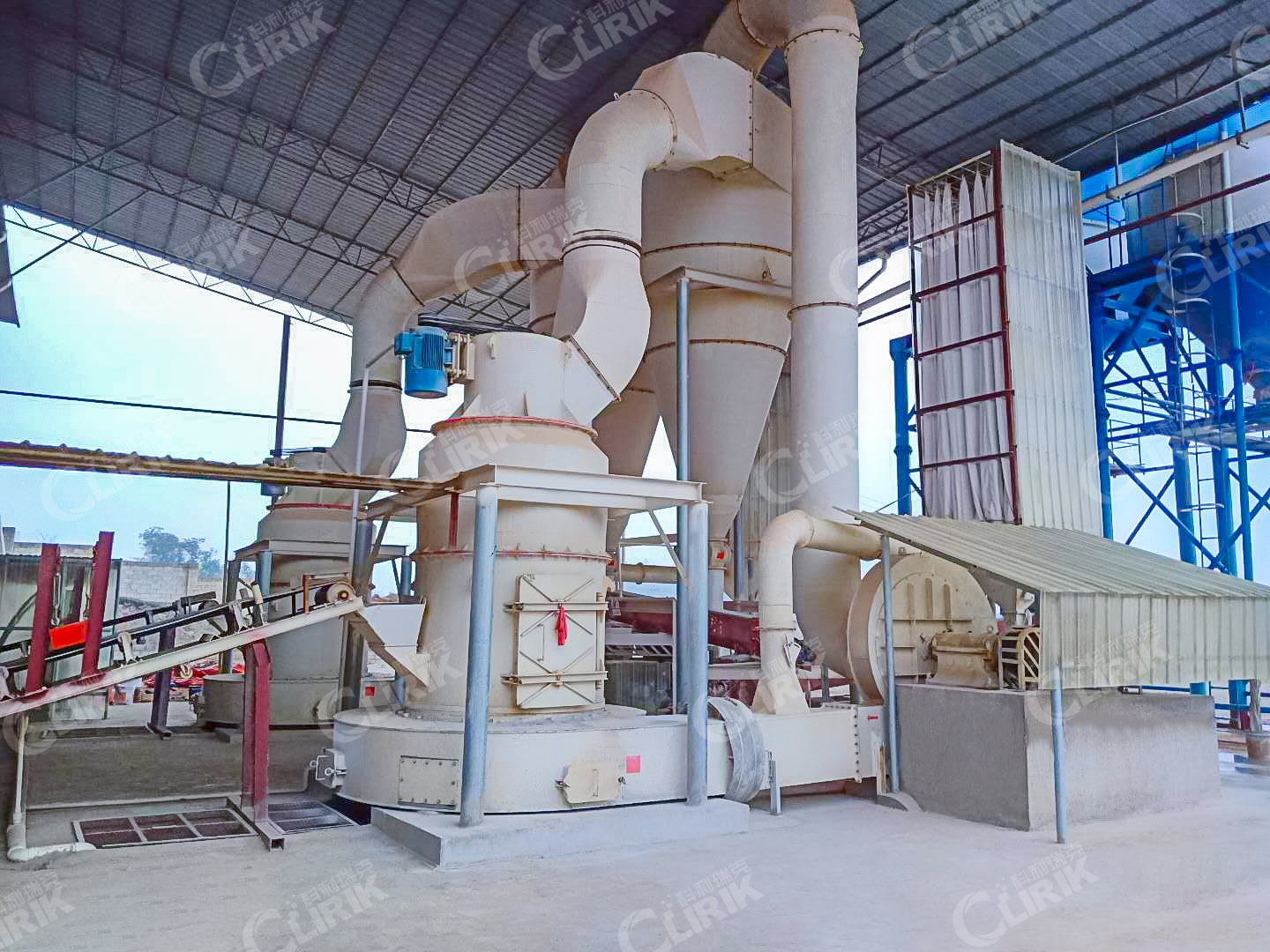The basic working principle of Raymond mill is to use the force of rolling. Regardless of whether the rolling roller is installed horizontally, vertically, or with an inclination angle, or whether the rolling roller is assisted by mechanical or hydraulic pressure to increase the crushing force, there are two problems.

One is the occlusal angle formed between the rolling roller and the support plate surface, which determines the size of the material to be crushed by the friction force. The feed size exceeding the occlusal angle, no matter how much pressure is applied by the rolling roller, not only cannot crush the material, but it will increase the phenomenon of disc fragmentation caused by the material accumulation wave before the rolling and the jumping of the rolling roller.
The second is that with the refinement of the material, the number of material particles on the contact surface under the rolling roller increases, and the crushing force of a single material particle is drastically reduced, which greatly reduces the processing capacity of the equipment. Excessive pressure exerted by the rolling roller brings insurmountable difficulties to the material selection of Raymond mill parts, the rational use of power performance and energy consumption. The material selection of the Raymond Mill's working system is limited by the working method, and it becomes extremely difficult to remove the impurities mixed in the processing. Because it is difficult to use large-volume non-metallic materials to manufacture rolled parts, the amount of impurities mixed in is large and difficult to remove. Additional power systems and equipment are required for classification.
The basic working principle of jet mill is to use high-pressure gas to carry the processed mineral particles to violently collide and rub in the crushing chamber to achieve the purpose of crushing.
Since the grinding power used is gas, the energy utilization rate is greatly reduced. Compress the air in its natural state by a compressor to convert electrical energy or chemical energy (engine) into compressed gas energy. After the impurity treatment of the gas (oil, water, etc.), it enters the crushing chamber to release energy to perform work, and then the gas energy Cannot be recycled. These processes result in a rather low energy utilization rate of the equipment.
The high-pressure gas carries the processed mineral particles violently colliding and rubbing in the crushing chamber to achieve the purpose of crushing, making the crushing ratio impossible to be too large. Even if extremely high pressure is applied, the effect will not change significantly. This results in a large investment in the preliminary preparation of the feed particle size of the jet mill, and pollution usually occurs here. The product pollution caused by jet mill comes from the previous process. The particle shape of the product produced by the collision has poor sphericity.

E-mail:
sales@clirik.com
Call Us:
+86-18917951321